F-4 Phantom II
The F-4 Phantom II is a tandem two-seat, twin-engine, all-weather, long-range supersonic jet interceptor and fighter-bomber originally developed by McDonnell Aircraft for the United States Navy. It first flew in 1958 and became operational in 1960. The F-4 Phantom II quickly gained popularity due to its adaptability, becoming one of the most iconic aircraft of the Cold War era.
Key Points in Its History:
Design and Versatility: Originally designed as a carrier-based interceptor for the U.S. Navy, the F-4 was unique in its use of powerful twin engines and advanced avionics. Its versatility allowed it to serve not only as an interceptor but also in roles like air superiority, ground attack, and reconnaissance, making it highly adaptable for various missions.
Vietnam War: The Phantom saw extensive action in the Vietnam War with both the U.S. Navy and U.S. Air Force, excelling in air-to-air combat and ground attack missions. Despite its strengths, it faced challenges against agile enemy aircraft, leading to the development of new tactics and the establishment of programs like the Navy’s "Top Gun" fighter school.
Global Use and Variants: Over 5,000 Phantoms were produced, and it was used by nearly a dozen nations, including the U.K., Germany, Japan, Israel, and Iran. Each country customized the Phantom to meet its needs, leading to various modified versions. The F-4 also became known for its iconic "smoky" exhaust trails and impressive speed, capable of flying at over twice the speed of sound (Mach 2+).
Technological Advancements: The Phantom introduced the use of beyond-visual-range (BVR) air-to-air missiles and radar-guided missiles. It was one of the first jets equipped with a radar that allowed it to engage targets at long ranges, a breakthrough in aerial combat technology at the time.
Legacy: The F-4 continued to serve until the late 20th century, being gradually phased out by newer fighters like the F-15 and F-16. However, many Phantoms are still operational around the world, particularly in air forces such as Greece and Turkey, with upgraded avionics and systems. It remains one of the most produced and celebrated fighter jets in history.
United Nations (UN)
The United Nations (UN) is an international organization founded in 1945 in the aftermath of World War II, with the primary goal of promoting peace, security, and cooperation among nations. Headquartered in New York City, the UN was created to prevent future global conflicts and address international issues collectively.
Key Points in Its History:
Founding and Purpose: Established on October 24, 1945, the UN began with 51 member states. Its founding principles were outlined in the UN Charter, which emphasizes peace, human rights, social and economic development, and disarmament. The UN replaced the League of Nations, which had failed to prevent World War II.
Structure and Main Bodies: The UN has six main organs:
General Assembly: A forum for all member states to discuss and coordinate on global issues.
Security Council: Responsible for maintaining international peace and security, with five permanent members (U.S., Russia, China, U.K., France) and ten rotating members.
International Court of Justice (ICJ): Settles legal disputes between countries.
Economic and Social Council (ECOSOC): Promotes sustainable development and cooperation on economic and social issues.
Secretariat: Manages the day-to-day operations, led by the Secretary-General.
Trusteeship Council: Originally established to oversee decolonization; its work has largely been completed.
Peacekeeping and Conflict Resolution: The UN is known for its peacekeeping missions, where it deploys troops (contributed by member states) to conflict zones to maintain or restore peace. Notable missions have taken place in areas like Bosnia, Rwanda, Congo, and Lebanon. While peacekeeping has had successes, it also faced criticisms due to challenges in certain missions, such as in Rwanda and Somalia.
Humanitarian Efforts: Through agencies like the World Food Programme (WFP), UNICEF, and the UN High Commissioner for Refugees (UNHCR), the UN provides aid to millions affected by hunger, conflict, and natural disasters. Its specialized agencies, like the World Health Organization (WHO), play crucial roles in global health crises, including combating pandemics and infectious diseases.
Sustainable Development Goals (SDGs): In 2015, the UN adopted the Sustainable Development Goals (SDGs), a set of 17 goals aimed at ending poverty, protecting the planet, and ensuring prosperity for all by 2030. The SDGs have become central to the UN’s efforts in addressing global challenges like climate change, inequality, and access to education.
Contemporary Role and Challenges: With 193 member states today, the UN is the world’s largest international organization. While it continues to address global issues, it faces challenges due to political divisions, financial constraints, and criticisms of bureaucracy. The UN is continually evolving to remain relevant in a changing global landscape, balancing the interests of diverse member states while upholding its core mission of promoting peace and cooperation.
Both the F-4 Phantom II and the United Nations have made lasting impacts in their respective fields—one in military aviation, the other in global diplomacy. The Phantom symbolizes the technological strides and challenges of Cold War-era combat, while the UN embodies the hope and challenges of fostering peace and cooperation on a global scale.
Specifications
Spotlights
- TheCertifiedRedhead 1.1 years ago
- excd 1.1 years ago
- tonplam356 1.1 years ago
General Characteristics
- Predecessor F-4 phantom
- Created On Android
- Wingspan 32.6ft (9.9m)
- Length 50.9ft (15.5m)
- Height 15.5ft (4.7m)
- Empty Weight N/A
- Loaded Weight 15,868lbs (7,197kg)
Performance
- Power/Weight Ratio 6.797
- Wing Loading 44.5lbs/ft2 (217.2kg/m2)
- Wing Area 356.6ft2 (33.1m2)
- Drag Points 5285
Parts
- Number of Parts 149
- Control Surfaces 5
- Performance Cost 1,032

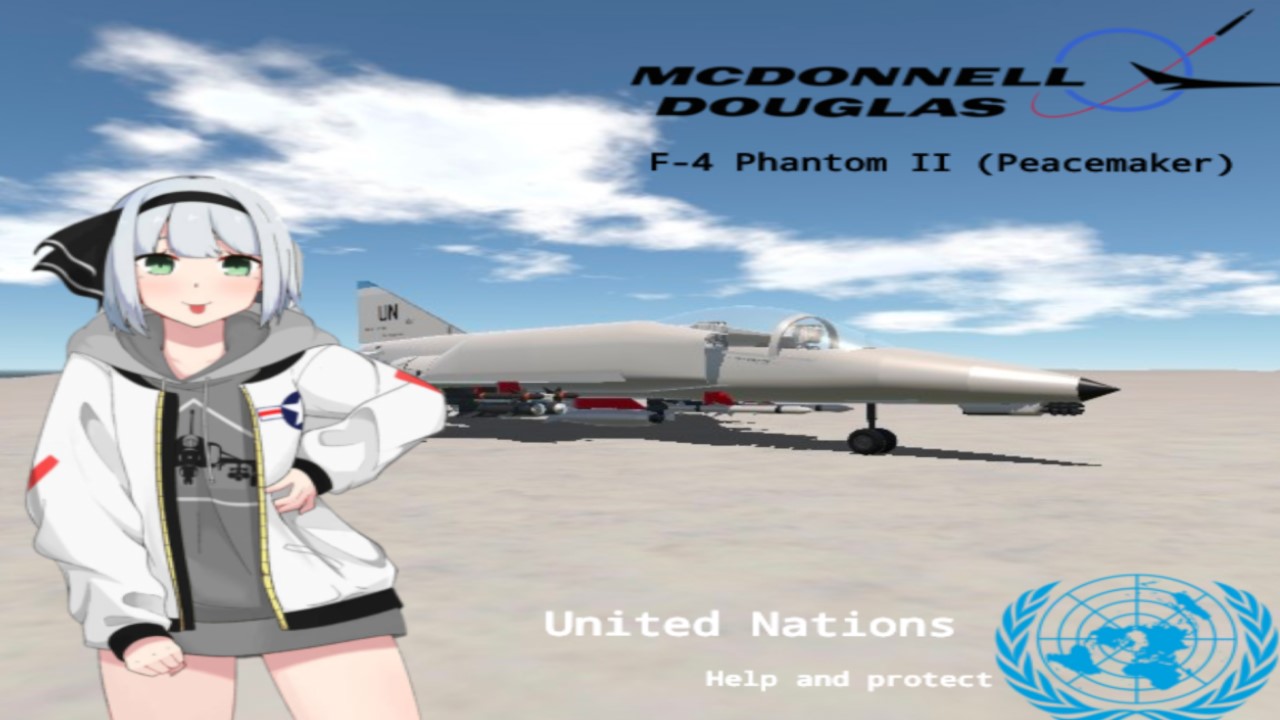
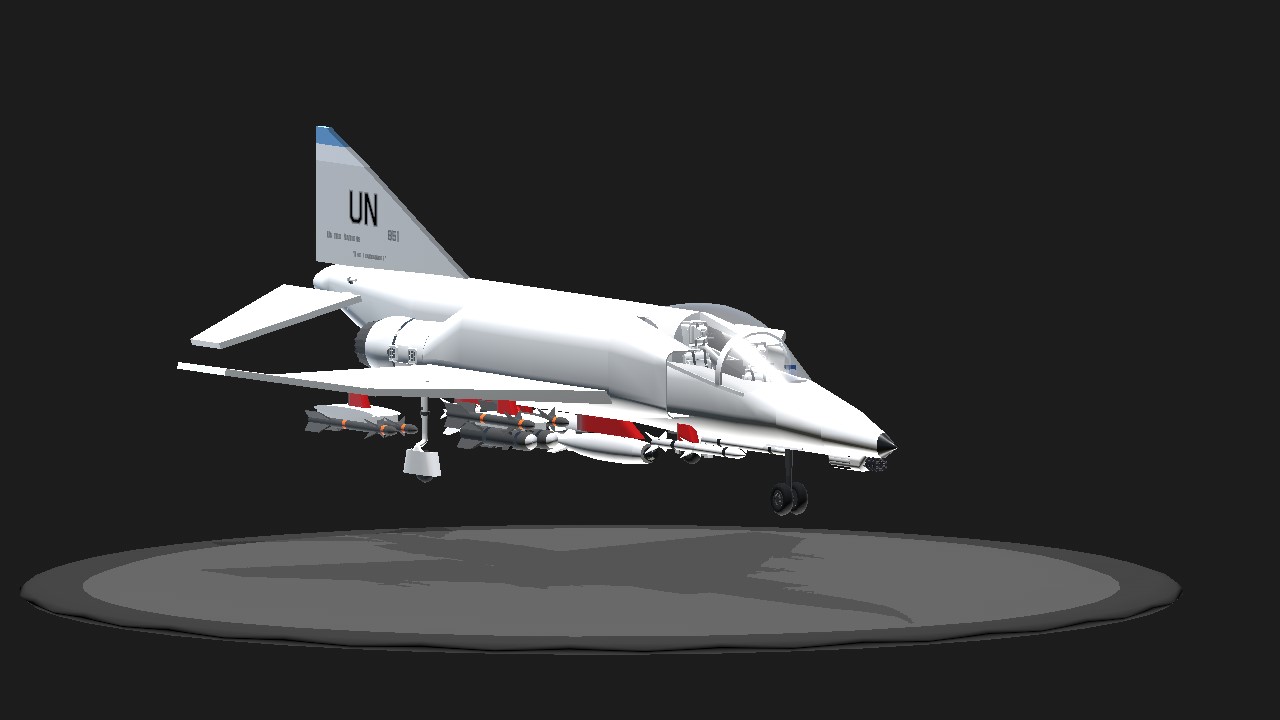
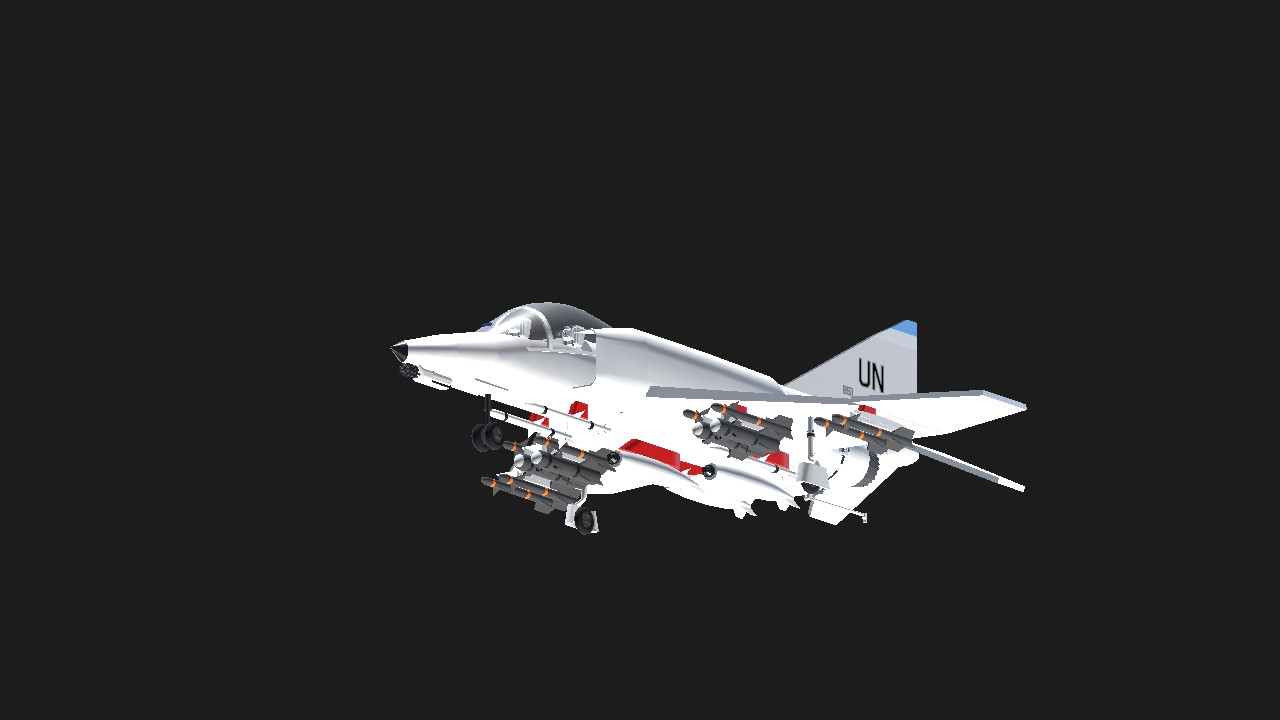

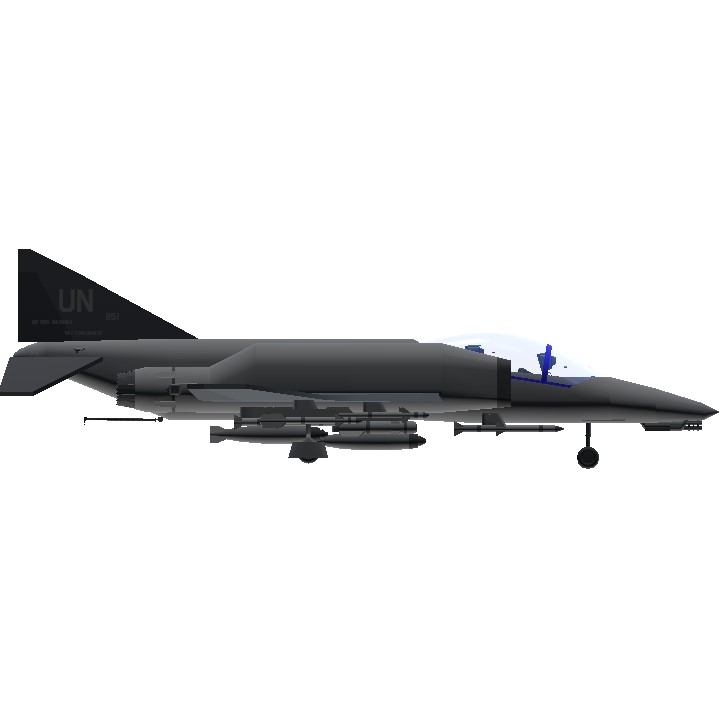
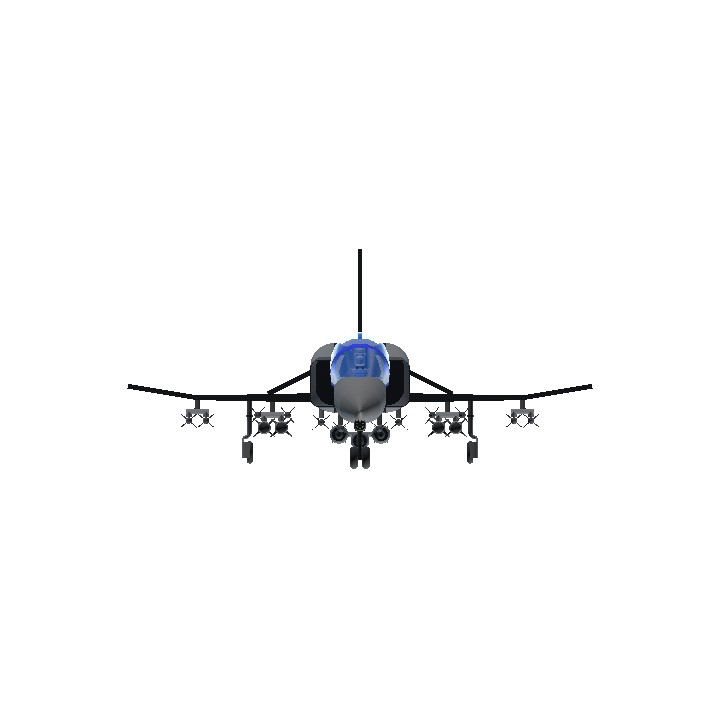
@Eagleman101SP okay
@EarthSensei is your next build a UN Su-30SM
If it is tag me
Love it
Thx@EarthSensei
@tonplam356 here you go